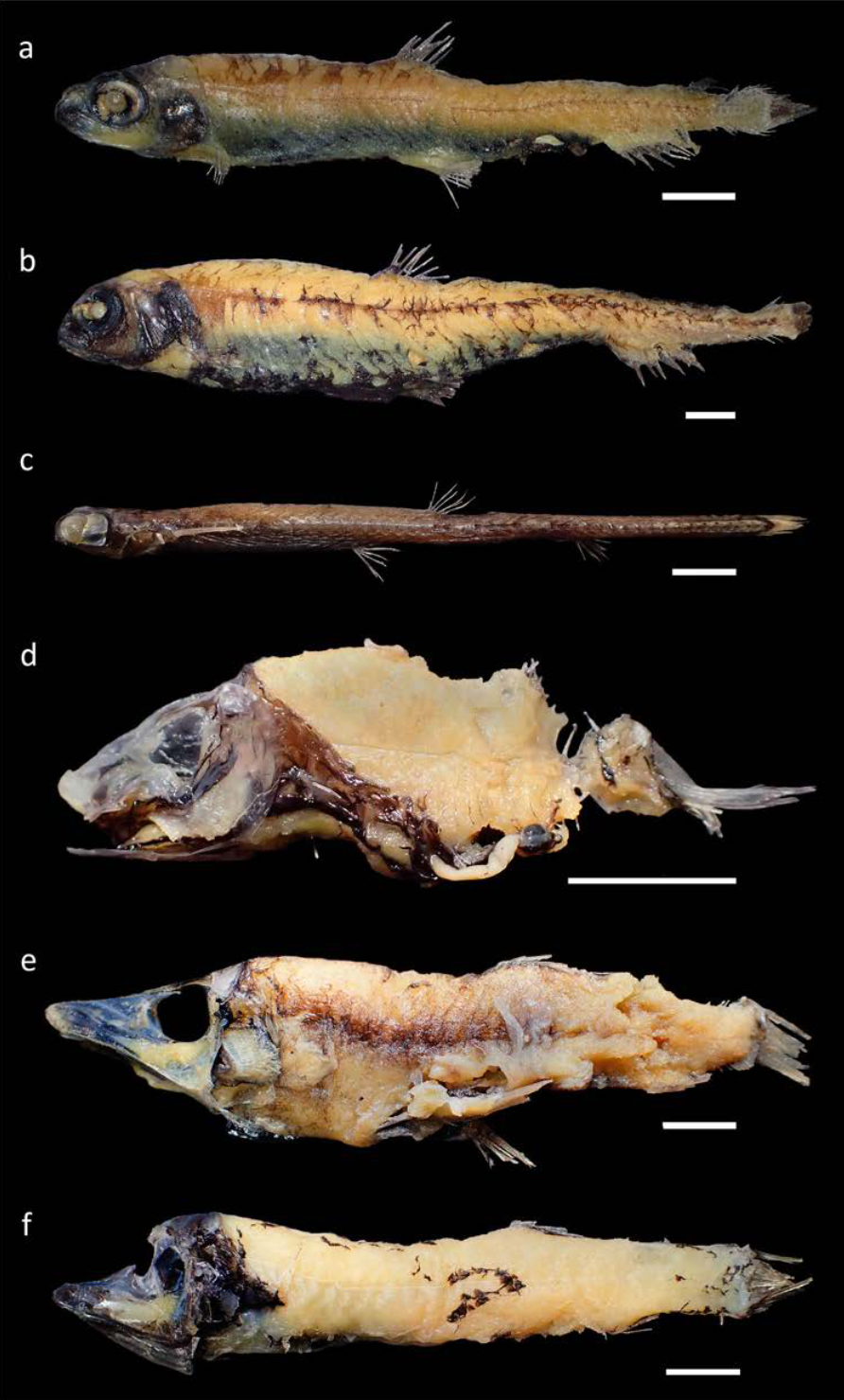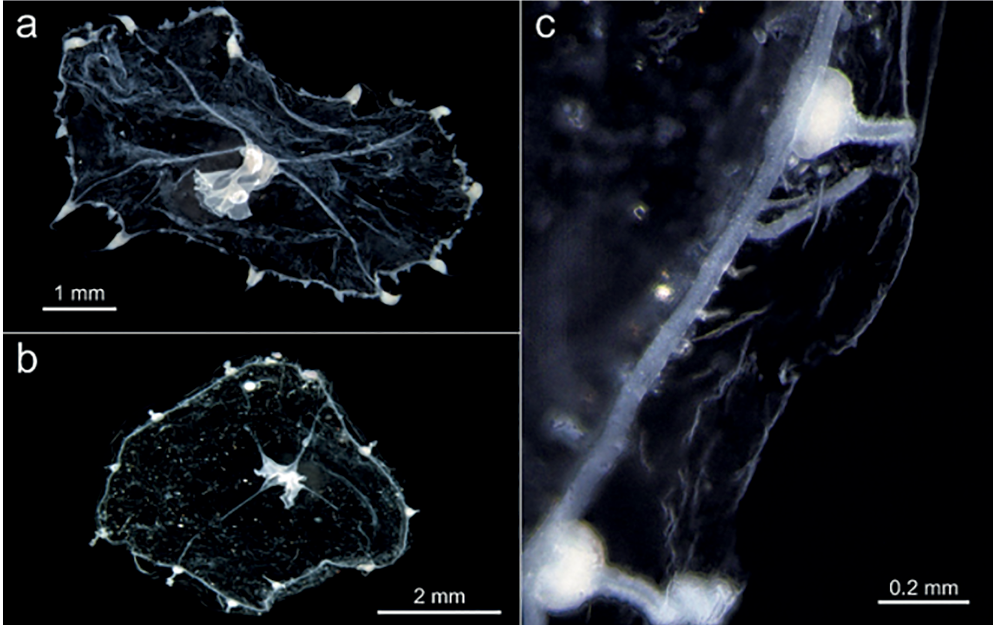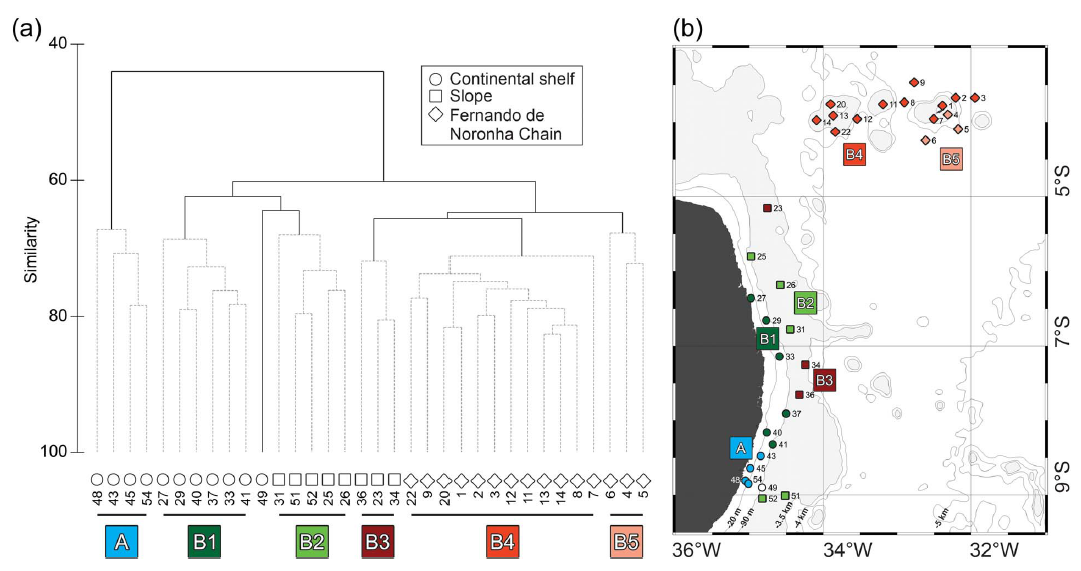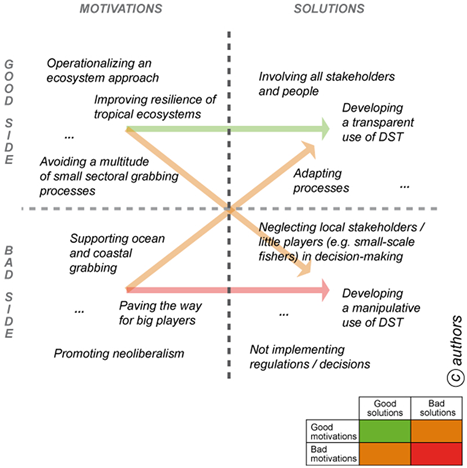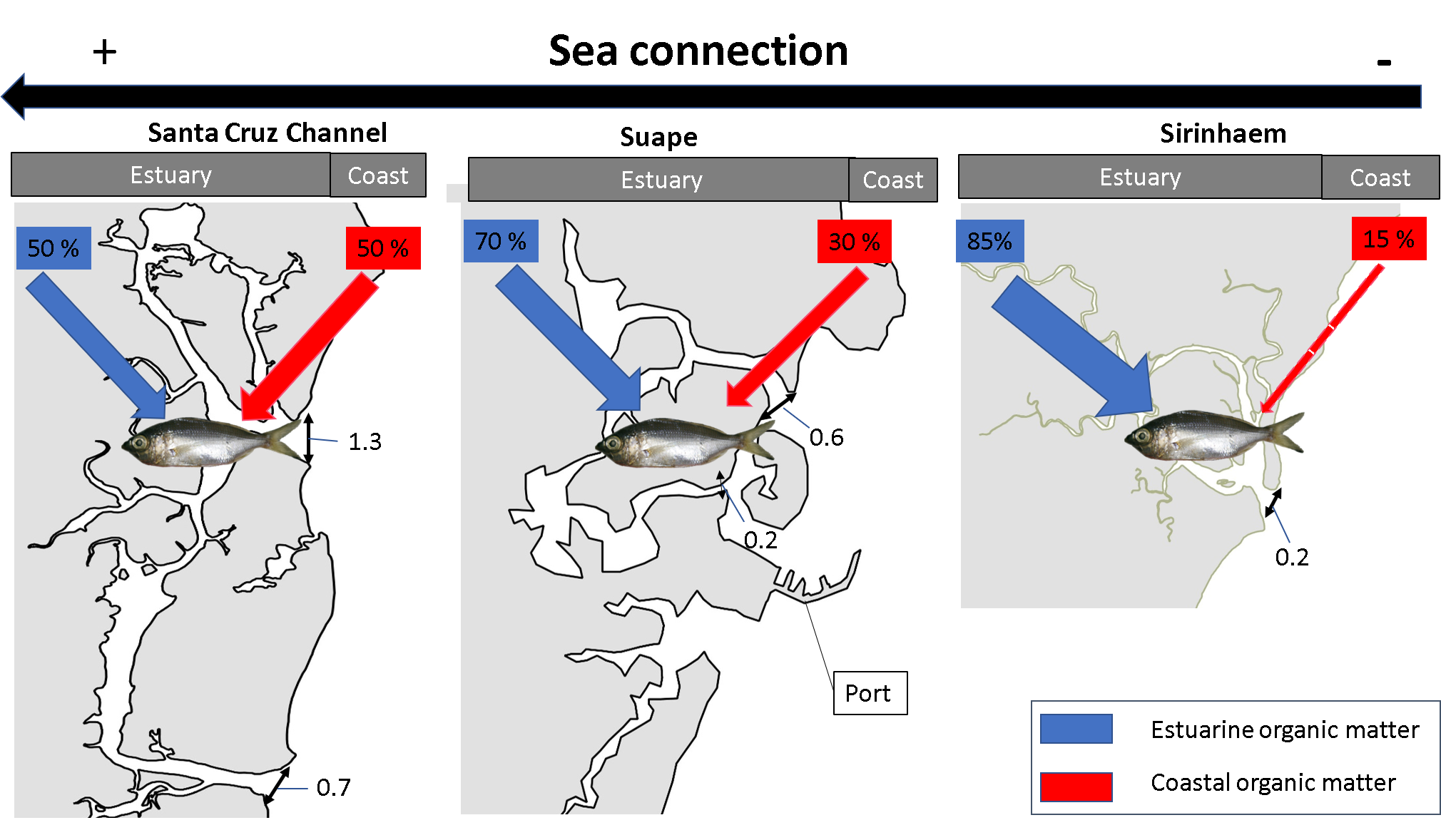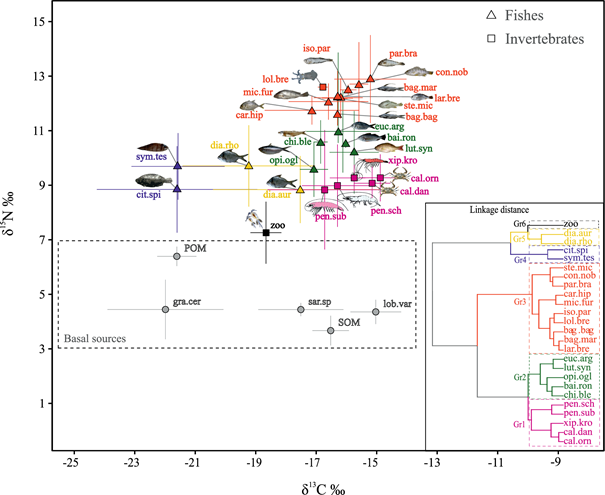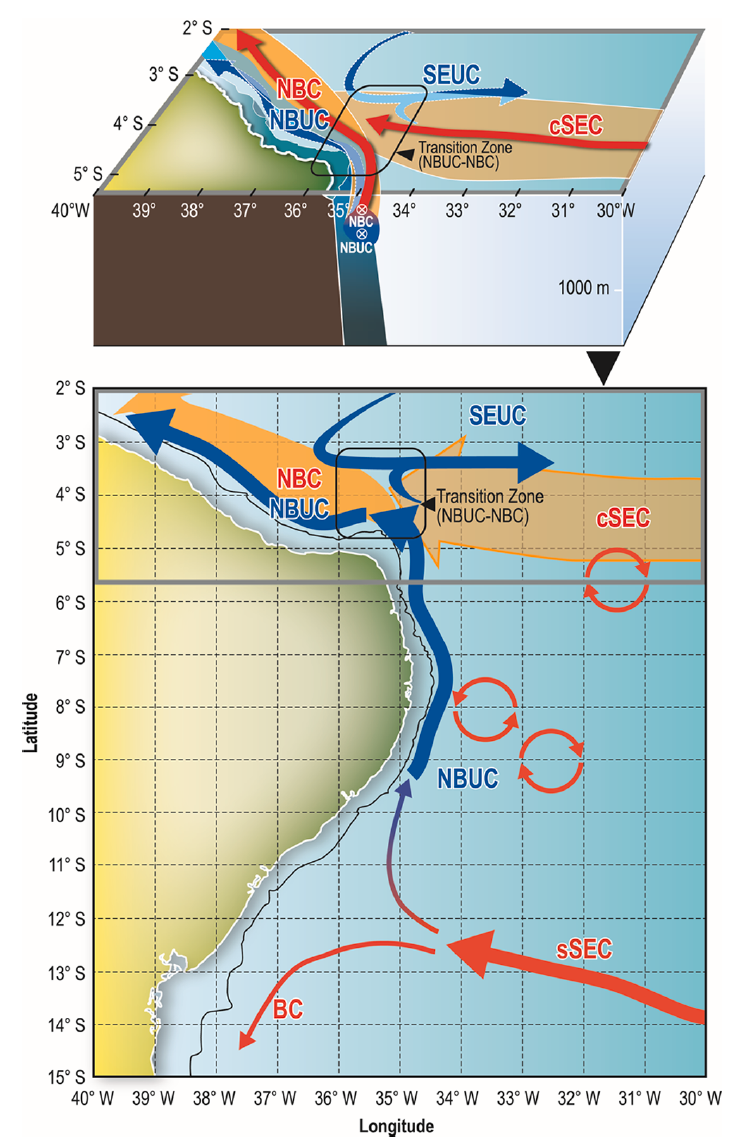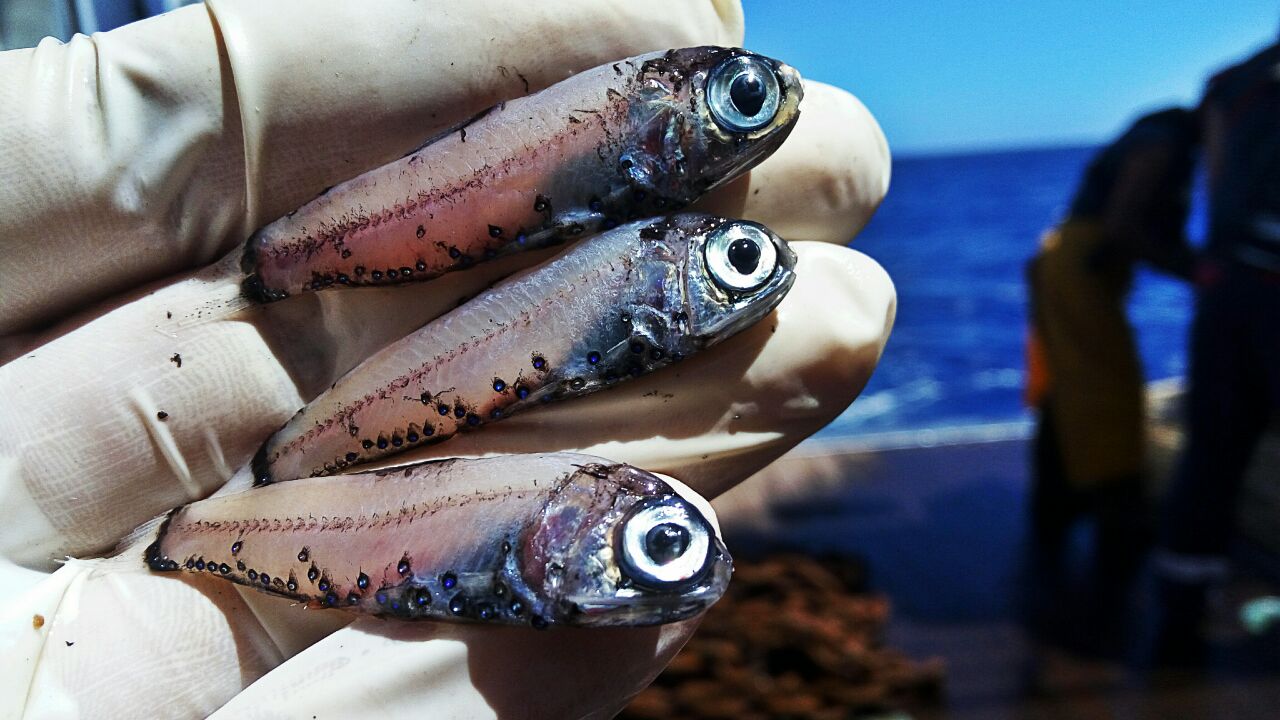The hydrodynamic and the occurrence of topographic upwelling around the north Brazilian seamount chain were investigated. Meteorological and physical oceanographic data gathered under the REVIZEE-NE
Using current, hydrographic and satellite observations collected off Northeast Brazil around the Fernando de Noronha Archipelago and Rocas Atoll during two oceanographic cruises (spring 2015
New data on the taxonomic composition and distribution of rare deep-sea species of the Bathylagidae, Microstomatidae, and Opisthoproctidae (Argentiniformes) collected off northeastern Brazil, including the
doi.org/10.1590/2675-2824069.20-001egt Reference Tosetto E.G., Neumann-Leitãoa S., Bertrand A., Nogueira Júnior M. 2021. First record of Cirrholovenia polynema (Hydrozoa: Leptothecata) in the Western Atlantic Ocean. Ocean and Coastal
In marine western boundary systems, strong currents flowing coastward spread oceanic water masses over the continental shelves. Here we propose to test the hypothesis according
Ocean grabbing occurs when traditional users, such as small-scale fishers, are pushed aside by new development activities. This grabbing must be prevented to avoid sea
Coastal habitats are interlinked by ecological connectivity, defined as the exchange of organic matter or organisms between habitats. The degree of this connectivity will depend
We used complementary stable isotope (SIA) and stomach content (SCA) analyses to investigate feeding relationships among species of the nektobenthic communities and the potential ecological
Important roles as near-surface northward paths for the Atlantic meridional overturning circulation. To investigate the meridional evolution of the near-surface western boundary circulation in that
Length‐weight relationship parameters were calculated for twelve mesopelagic fish species from the western Tropical Atlantic: Diretmus argenteus, Melamphaes polylepis, Bolinichthys distofax, Diaphus lucidus, Diaphus splendidus, Electrona





